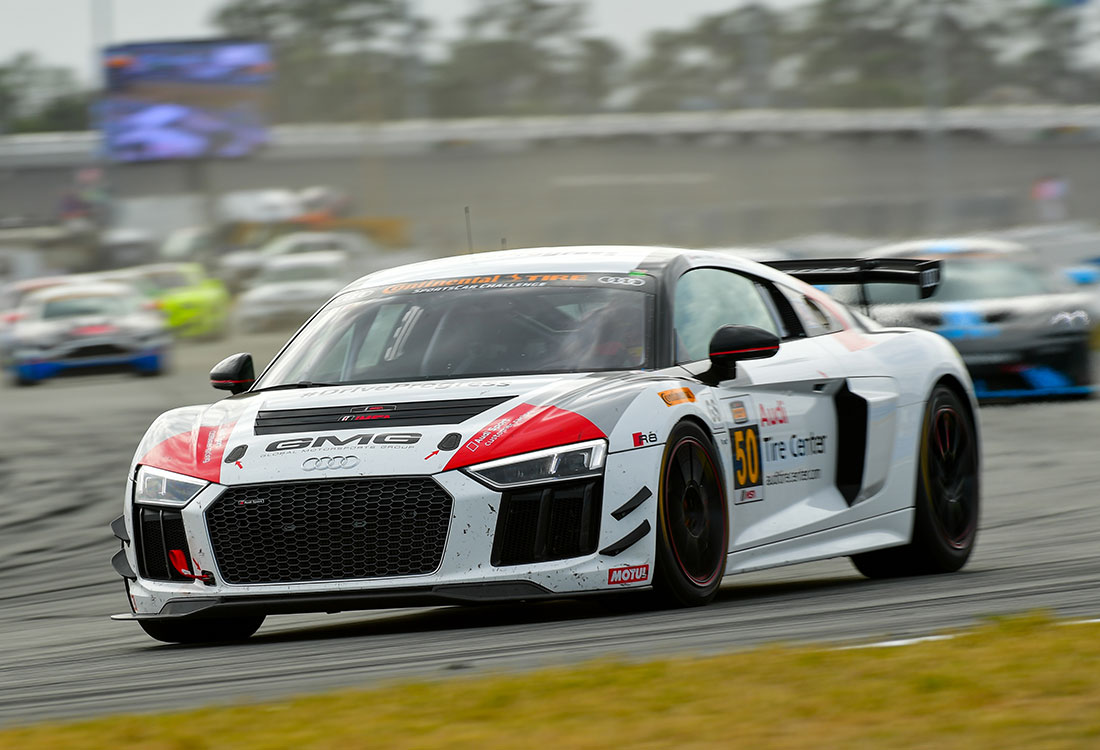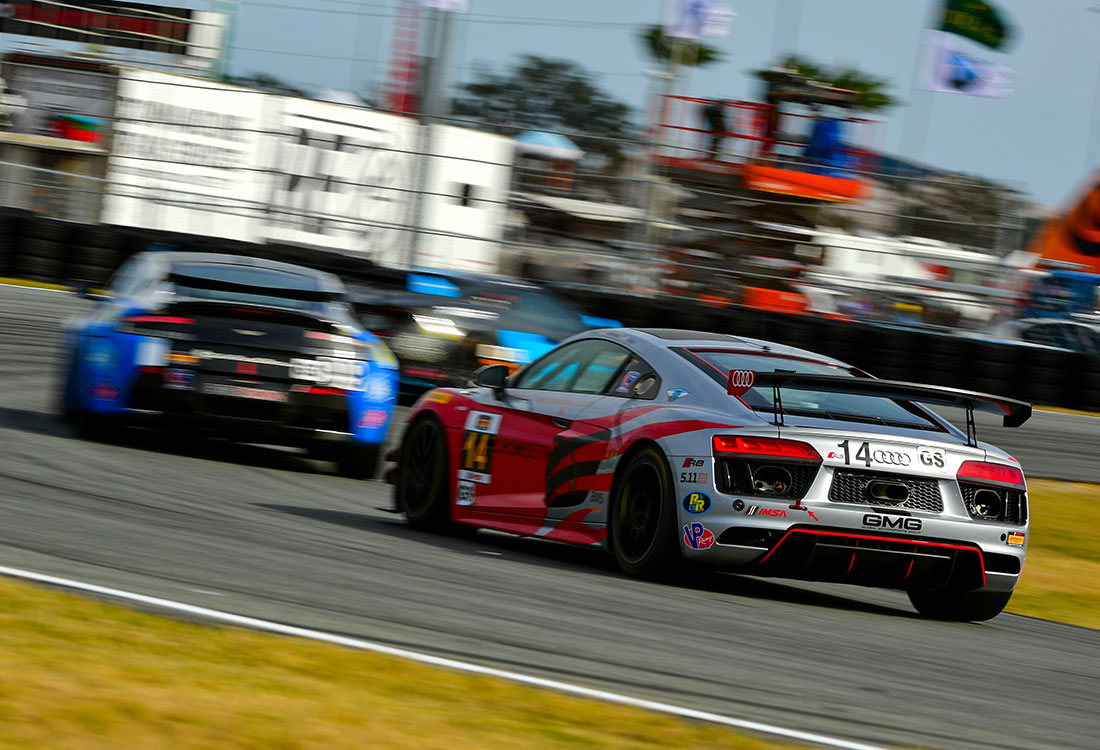It is said that the only way to make a small fortune in motorsport is to start out with a big one.
Audi, however, is determined to turn its motor racing activities into a customer experience that has become a profit centre for the car-maker rather than the money pit it can become.
The company, in many ways emulating fellow Germans, Porsche and BMW, has decided the way to make money out of motor racing is to become the outfit that actually sells the racecars. More crucially, be the one to sell the racecar parts to racers.
Audi Sport has, over the past two years, become a high-visibility focus point for the German premium brand, with a new model onslaught of S and RS models fielded right across the company’s range of cars. From the RS3 through to the R8 V10 Plus, Audi is steadily adding high performance to its road car range.
But there is another piece of the puzzle. Last year Audi Sport, the brand’s customer sport division, sold 138 racing cars globally.
“That doesn’t sound like many, until you realise that we sold 135 in total for our first seven years,” said Chris Reinke, the head of Audi Sport customer racing, who was in Australia for the Bathurst 12 Hour endurance race.
Mr Reinke is in charge of the Audi Sport racing program where Audi builds GT3, GT4 and TCR racecars for customers around the world.
He is charged with making the racecar program a viable and profitable entity, despite the small throughput and the logistics of delivering racecars to all corners of the globe.
For the Bathurst 12 Hour, the team brought two of its gun Audi R8 LMS GT3 cars from Germany and assisted with the running of five other LMS’ operated by local teams.
The R8 LMS GT3 is the pinnacle of Audi Sport’s fleet with more than 300 race meetings a year around the world featuring the rear-drive, mid-engined two-seater. What’s more, the vast majority of the 200-plus R8s built by Audi Sport are still on the track, even after up to eight years of service for the earliest builds.
“We can rebuild the entire car from scratch,” said Mr Reinke, “even go to the lengths of replacing the entire front or rear half of the car.”
But the GT3, which sells for around $590,000, is just one element of the racing strategy.
The head of customer management, Dirk Spohr, suggested that the 430kW GT3 car can be a tough car to master and that Audi caters for a wider range of race drivers with TRCs and GT4s.
“A lot of people dream of being racing car drivers, but the GT3s can be hard to handle,” Mr Spohr said. “The TCRs and GT4s allow people to take up racing as a hobby.”
The 364kW R8 LMS GT4 is cheaper – at around $300,000 – and more than 60 per cent of its build is derived from the roadgoing V10 Coupe. In fact, it is built at the same Bollinger Hofe facility as the road car.
“It’s designed to promote the R8, of course, but it also gives the company the spirit of racing, as well,” said Mr Spohr.
The GT4 made its racing debut just this year, and already an R8 GT4 is en route to Australia, where it will race at the Adelaide 500. 
Audi Sport plans on building 60 GT4s this year. These will be sold through subsidiaries in four countries including China, Japan, the US and Australia (via the Melbourne Performance Centre).
“One of the advantages of the R8 is that it’s really affordable to run,” said Mr Reinke. “The engine will do 10,000km in racing before you need to overhaul it.”
He revealed that potential customers are able to work out exactly what the running costs of each car will be before they even take delivery. The LMS GT3, for example, is costed at €9.50 ($A14.90) per racing kilometre, while the less-stressed GT4 costs closer to $12.50 per kilometre.
However, the leading R8 LMS GT3 at Bathurst covered 271 laps of the 6.3km course, totalling 1707km generating a bill of more than $25,000. And this assumes that – unlike three of the Audi entries in the 2018 race – there is no crash damage to repair.
The entry-level tier in the Audi Sport business model is the TCR class.
Born out of the now defunct World Touring Car Championship, TCR cars must be front-wheel-drive four- or five-door sedans or hatches powered by a turbocharged four-cylinder engine between 1750cc and 2000cc, and no more than 260kW in output.
According to the governing body of motorsport, the FIA, “no fewer than 19 TCR-based championships or series exist around the world. Several manufacturers have, or are in the process of, homologating TCR cars including Alfa Romeo, Audi, Ford, Honda, Hyundai, Kia, Lada, Opel, Peugeot, Renault, Seat, Subaru and Volkswagen.
Audi Sport has adopted the RS3 sedan as the basis for its TCR racecar, despite having to remove its five-cylinder engine and all-wheel-drive system to comply with the regulations.
There were reasons around choosing the four-door sedan bodystyle over the hatch, according to Mr Spohr.
“All of our rivals have gone for hatchbacks,” he said, “and the decision was made to use the sedan because of the importance of that body shape to our US and Chinese markets. Basically, though, its different shape is a unique proposition.”
A TCR car can be had for as ‘little’ as $170,000 for a seven-speed DSG-equipped version, or around $200,000 for a Sadev sequential gearbox-specced model.
“The DSG can go for much longer between services,” said Mr Reinke. “In fact, we recommend this gearbox for our customers who race endurance events.”
The cost of running a TCR car per kilometre falls to €3.50 ($A5.50) a kilometre and racing distances are shorter as well.
Audi Sport is banking on selling 80 TCRs in 2018, with the company even selling ‘fleets’ of racecars into countries looking to form a one-make series.
There may even be a TCR series in Australia, should a promoter be found to back a series that has been approved in principle by racing’s governing body, CAMS.
Backing Audi Sport customer racing is a 90-strong workforce that’s based in Audi’s home town of Ingolstadt, Germany, while a fleet of three trucks services not only Audi’s racecars but, in the case of the TCR series, it can also supply customers who run Volkswagen or Seat products.
“It makes a good business case,” said Mr Reinke.
The team’s trip to Australia netted them a somewhat fortuitous win under red flag conditions, but the Bathurst 12 Hour is just one of a myriad of races that the Audi Sport customer racing team will tackle in 2018.













 Read More: Related articles
Read More: Related articles

